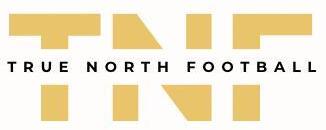The Canadian soccer (if you’re outside North America, please get used to this word for now) league system is relatively straightforward and easy to follow. With a clear hierarchy of leagues and undefined promotion and relegation rules, most teams stay where they are and league structure and teams are quite similar every year. The Canadian Soccer Association (CSA) governs the sport in the country, overseeing the league system and domestic cups. However, the CSA does not operate any of the individual leagues within the system. Additionally, some Canadian teams compete in leagues based in the United States (Like the MLS).

League Structure
The Canadian soccer system consists of several independent leagues and lacks a promotion and relegation system. Leagues are classified as professional, pro-am, or amateur. The CSA, as the sport's governing body in Canada, directly sanctions leagues that operate across multiple provinces, while leagues confined to a single province are sanctioned by the relevant provincial soccer association.
Major League Soccer
Major League Soccer (MLS) is the top-tier professional soccer league in the United States and Canada. It is sanctioned by the United States Soccer Federation (USSF) and includes both American and Canadian teams, making it unique as a bi-national league in North American sports.
Canadian Teams In the MLS
There are three Canadian teams that compete in MLS:- Toronto FC (Joined in 2007)
- Vancouver Whitecaps FC (Joined in 2011)
- CF Montréal (Joined in 2012)
These teams are members of the Canadian Soccer Association (CSA), even though they play in a league primarily governed by the USSF. Their inclusion in MLS is part of a broader tradition where major Canadian sports teams compete in American leagues, as seen in other sports like hockey and baseball.
Canadian Talent in MLS
MLS serves as a significant platform for Canadian soccer talent. The league has played an essential role in developing Canadian players, offering them the opportunity to compete at a high level within North America. Canadian players on MLS rosters not only contribute to their club teams but also often feature prominently in the Canadian national team setup.MLS also has specific rules that encourage the development and inclusion of domestic players. For Canadian teams, these rules mean that they must meet certain quotas for Canadian players, ensuring that local talent has a pathway to professional soccer.
Competitions Involving Canadian MLS Teams
Canadian MLS teams participate in both domestic and international competitions:
Canadian Championship: All three Canadian MLS teams compete in this annual tournament, which also includes teams from the Canadian Premier League (CPL) and other lower-division clubs. The winner of the Canadian Championship earns a spot in the CONCACAF Champions Cup.
Leagues Cup: Canadian MLS teams also participate in the Leagues Cup, a competition that features MLS and Liga MX teams (the top league in Mexico). This tournament further integrates Canadian clubs into the broader North American soccer landscape.
Youth Development and Academies
All three Canadian MLS clubs operate youth academies that focus on nurturing young Canadian talent. These academies are critical in developing the next generation of Canadian soccer players. Many academy graduates go on to play for the senior MLS teams or pursue careers in other professional leagues, both in North America and abroad.
Impact on Canadian Soccer
The participation of Canadian teams in MLS has had a profound impact on the sport's growth in Canada. The league's visibility and success have helped increase interest in soccer across the country. It has also provided a stable and high-level environment for Canadian players to develop and compete, which in turn has strengthened the Canadian national teams, especially the men’s side, as seen in recent successes in international competitions.
In summary, MLS plays a crucial role in the Canadian soccer ecosystem by providing a competitive platform for Canadian clubs and players, contributing to the development of soccer talent in Canada, and enhancing the sport's profile across the country.
Professional (Tier 1)
The Canadian Premier League (CPL) is the top division in Canada, serving as the only fully professional and fully national league within the system. Established in 2019, the CPL consists of eight teams and is sanctioned by the CSA. Top CPL clubs qualify annually for the CONCACAF Champions Cup.
The 3 Canadian MLS teams are still affiliated with the CSA and compete in the Canadian Championship, alongside CPL teams and lower-division qualifiers, rather than the U.S. Open Cup.
The Canadian MLS clubs also participate in the Leagues Cup, a competition between MLS and Liga MX clubs, within the CONCACAF region. The CPL is not involved in this competition.
Pro-Am (Tier 3)
Pro-am, or semi-professional, soccer in Canada is regionally organized due to the country's vast geography and dispersed population. Pro-am teams can include both professional and amateur players. There are four pro-am leagues: League1 Alberta (L1AB), League1 British Columbia (L1BC), League1 Ontario (L1O), and Ligue1 Québec (L1Q). These leagues operate in Alberta, British Columbia, Ontario, and Quebec, respectively, and are sanctioned by their provincial soccer associations. Together, these leagues feature more than 40 teams and are under the umbrella of League1 Canada, founded in 2022.
The PLSQ, established in 2012 as a semi-professional league, is sanctioned by Soccer Quebec. It includes a team from Eastern Ontario that competes with special permission from the CSA.
Following the 2013 Easton Report, the CSA aimed to establish a Division 3 semi-professional structure divided by region, similar to Canada’s major junior hockey leagues, with regional champions competing in a national tournament. In November 2013, the Ontario Soccer Association announced the sanctioning of League1 Ontario as part of this new structure.
In October 2021, BC Soccer announced the formation of League1 British Columbia, making it the third regional pro-am soccer league in Canada. The league began its inaugural season in May 2022 with seven clubs.
In 2022, Toronto FC II and Whitecaps FC 2 began competing in MLS Next Pro, a Division 3 league sanctioned by the USSF. Both Canadian clubs remain members of the CSA. Toronto FC II had previously competed in the USL Championship and USL League One.
League1 Alberta was established in March 2023 by the Alberta Soccer Association. With five teams in the men’s and women’s divisions, the league held an exhibition series in 2023. By December 2023, the league expanded to seven teams and received full sanctioning as part of League1 Canada ahead of the 2024 season.
Amateur
Various amateur leagues across Canada are sanctioned by their respective provincial or territorial soccer associations. These include the Pacific Coast Soccer League, Vancouver Island Soccer League, Vancouver Metro Soccer League, Fraser Valley Soccer League, Alberta Major Soccer League, Saskatchewan Premier Soccer League, Manitoba Major Soccer League, Ontario Soccer League, Ligue de Soccer Elite Quebec, Nova Scotia Soccer League, and New Brunswick Premier Senior Soccer League. These leagues compete for the Challenge Trophy.
Canada has 13 provincial and territorial soccer associations, each organizing amateur competitions at adult and youth levels. Promotion and relegation, along with league and cup competitions, are common within these associations, culminating in the national Challenge Trophy. However, not all associations consistently send teams to national championships.
Note: The United Soccer League (USL) manages several leagues, including the amateur USL League Two (USL2), which operates below Division 3 in the United States soccer league system. On November 18, 2015, the Ontario Soccer Association announced that four Ontario teams, including FC London (which later moved to League1 Ontario), would no longer be permitted to participate in USL2 starting in 2017.


